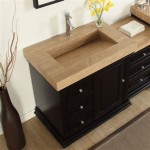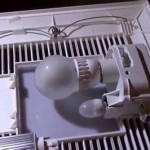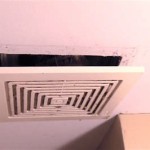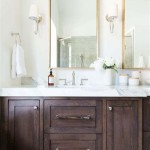What To Use To Clean Mold Off Bathroom Walls
Mold growth in bathrooms is a common problem due to the warm, humid environment. It can appear as black, green, or white patches on walls, ceilings, and other surfaces. Mold not only affects the aesthetics of your bathroom but also poses potential health risks, including allergies, respiratory problems, and infections. Therefore, it is crucial to address mold growth promptly and effectively. This article provides guidance on the most effective cleaning solutions for mold removal from bathroom walls.
Understanding the Types of Mold
Before tackling mold removal, it is essential to understand the different types of mold. Common types found in bathrooms include:
- Black Mold (Stachybotrys chartarum): Known for its potent toxins and potential health risks. It often appears as black or dark green patches.
- Cladosporium: A common type found both indoors and outdoors. It can be gray, brown, or black.
- Alternaria: Another common type associated with allergies. It typically appears as black or dark green patches.
It is crucial to identify the specific type of mold present based on its appearance, location, and potential health risks. For complex cases or if you suspect black mold, it is advisable to consult a professional mold remediation expert.
Safe and Effective Cleaning Solutions
Once you have identified the mold, you can proceed with removal using safe and effective cleaning solutions. The following methods are commonly recommended:
1. Bleach Solution
Bleach is a powerful disinfectant that can effectively kill mold. To use bleach, mix one part bleach with ten parts water in a spray bottle. Apply the solution to the affected area, ensuring it saturates the mold. Allow the solution to sit for 10-15 minutes before scrubbing with a stiff-bristled brush. Rinse thoroughly with clean water and allow the area to dry completely.
Caution: Bleach can be corrosive and should be handled with care. Wear gloves, eye protection, and adequate ventilation while using bleach. Avoid mixing bleach with other cleaning products, especially ammonia, as it can produce toxic fumes.
2. Borax
Borax is a natural mineral that has antifungal properties. To use borax, mix one cup of borax with one gallon of warm water. Apply the solution to the moldy areas using a spray bottle or a cloth. Let it sit for 15-20 minutes before scrubbing with a brush. Rinse thoroughly with clean water and allow the area to dry completely.
Note: Borax is generally safe to use around children and pets, but it is advisable to keep it out of reach of children and pets. Ensure proper ventilation when using borax, as it can generate dust.
3. Vinegar
Vinegar is an acidic solution that can effectively kill mold spores. To use vinegar, mix equal parts vinegar and water in a spray bottle. Apply the solution to the moldy areas and let it sit for 30-60 minutes. Scrub with a brush and rinse thoroughly with clean water. Vinegar is a natural and non-toxic cleaning solution, making it suitable for individuals with sensitivities to harsh chemicals.
4. Tea Tree Oil
Tea tree oil possesses strong antifungal properties. To use tea tree oil, dilute a few drops of tea tree oil in a cup of water and apply it to the moldy areas using a spray bottle or a cloth. Allow it to sit for 15-20 minutes before scrubbing with a brush and rinsing with clean water. Tea tree oil has a strong aroma, and proper ventilation is recommended while using it.
Preventive Measures
After cleaning the mold, it is important to take preventive measures to prevent its recurrence. Some effective strategies include:
- Improve Ventilation: Ensure proper ventilation in the bathroom by using exhaust fans during and after showers. Open windows to allow air circulation whenever possible.
- Reduce Humidity: Minimize humidity in the bathroom by wiping down wet surfaces after showers, using a dehumidifier, and avoiding excessive steam generation.
- Address Leaks: Repair any leaks or drips in plumbing fixtures promptly to prevent moisture accumulation and mold growth.
- Seal Grout: Apply sealant to grout lines to prevent moisture penetration and mold growth.
Regularly inspecting and cleaning your bathroom can help prevent mold growth and maintain a clean and healthy environment. By following these guidelines and taking appropriate precautions, you can effectively remove mold from your bathroom walls and prevent its recurrence.

How To Remove Mold From Walls True Value

How To Remove Mold In A Tile Shower

The Ultimate Guide On How To Clean And Get Rid Of Mold Pro Housekeepers

How To Get Rid Of Mold In Bathroom 2024 Tips From Puroclean

Black Mold In The Shower How To Clean It Kitchen With Matt

Bathroom Ceiling Mold Removal When To Clean Call Branch Environmental

How To Remove Mold From Bathroom Walls 6 Cleaning Tips

How To Get Rid Of Mold In The Shower On Bathroom Walls Clorox

The Ultimate Guide On How To Clean And Get Rid Of Mold Pro Housekeepers

What To Know About Bathroom Mold And When You Should Worry
Related Posts







